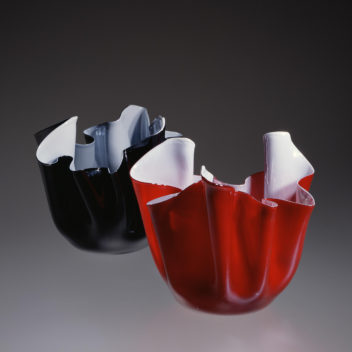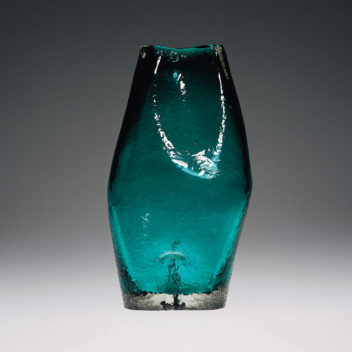
Fulvio Bianconi 1915–1996
Fulvio Bianconi was a graphic artist, caricaturist, and designer. Born in Padua, he attended the Istituto d’Arte and the Accademia di Belle Arti in Venice. He first encountered glass at age fifteen when he studied decoration with enamels under the guidance of Michele Pinto. During the late ’30s, he worked as a caricaturist, graphic artist, and illustrator for various publishing houses such as Mondadori, Rizzoli, Garzanti, and others. After World War II, he came to Murano to study glass techniques and met Paolo Venini. A productive relationship ensued as he began a collaboration with Venini in 1947 that lasted through the entire decade of the ’50s. One of his most characteristic works is the long series of stylized figurines which Bianconi designed at the end of the ’40s, taking his inspiration from the Italian Commedia dell’Arte. His pezzati vessels proved extraordinary due to their richness in color, as were the fazzoletti, presented in several different vitreous textures, which he created with Venini himself. He obtained widespread acclaim for the a Macchie and Fasce orrizontali series, in which Bianconi revealed a marked painterly vocation. In the ’50s, he worked with other workshops such as the Vetreria Cenedese, designing vessels with applications and other pieces with cased decorations. From 1958 to 1961, he designed glass pieces for I.V.R. Mazzega. In 1963, he designed for the Vetreria Vistosi. And in 1967, he began working again with Venini, creating vessels with unusual shapes such as the Informale (1968). After another contact with Venini in 1989, he designed for De Majo from 1991 to 1992.










